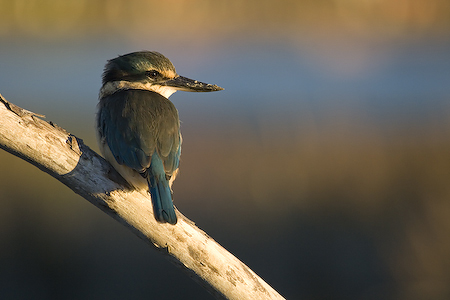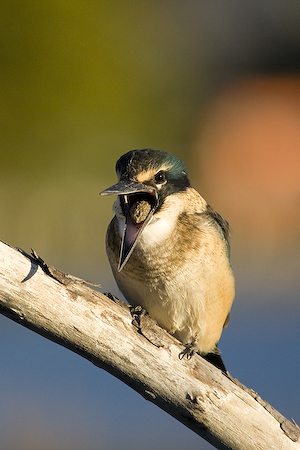Photo–essay: Hanging out with feathered royalty
Guest blogger: Photographer: Tom Marshall
Its not often you get the chance to hang around with royalty, but for the last few weeks I’ve had just that privilege with the Kingfishers (Kotare) of the Avon-Heathcote estuary near Christchurch.
Most often thought of as a bird of wetlands and coasts, the New Zealand Kingfisher is in fact a member of the ‘tree kingfishers’ family (Halcyonidae) and is just as likely to seen in farmland and forests, often far from water.

Photo: Tom Marshall
Most often seen perching on prominent spots like roadside telephone wires or old trees, these vantage points are just what the Kingfishers need to cast an eye on their prey – a real smorgasbord that can include anything from lizards and insects to more well-known menu items like whitebait.
However for my local Kingfishers, it’s a case of shooting fish in a barrel – or rather crabs in the mud. A seemingly endless supply of these bite-sized meals is available whenever the tides recedes, and whereas their overseas cousins may only catch a meal once in every dozen or so attempts, these lucky Kingfishers are successful almost every time.

Photo: Tom Marshall
Once it has its prey tightly grasped in that huge beak (more likely a useful nest excavating tool than hunting weapon), it’s straight back to a favoured perch and a few swift shell-splitting hits to make it more digestable.
Whilst we may enjoy picking the tastiest parts of crab out with a knife and fork, for the Kingfisher its ‘down in one’, only for the un-digestible parts of crab to be regurgitated in a neatly packaged parcel a few hours later.

Photo: Tom Marshall
Although often seen on their own, where food is plentiful Kingfishers can gather in large numbers with the Avon-Heathcote estuary supporting an estimated 100 individuals along its banks.
So as the winter months head our way, why not take the time to visit your local patch and look out for the brightly coloured regal feathers of our New Zealand Kingfishers.
